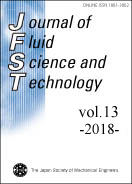Immiscible displacement processes have been investigated for decades to understand their applications, such as geosequestration of CO2 and enhanced oil recovery, in detail. In this study, the effect of buoyancy on fingering growth activity during a drainage process was investigated under the competitive influence of buoyancy, capillary, and viscous forces. A packed bed of glass microbeads was used as a porous medium for immiscible fluid pairing of silicon oil and water as a non-wetting phase (NWP) and wetting phase (WP), respectively. The time lapse 3D structure of finger development was visualized for a Bond number Bo range of 3.84 × 10-4 to 3.45 × 10-3 and a capillary number Ca range of 4.30 × 10-9 to 4.30 × 10-7 using an X-ray CT scanner. Three instability regimes—capillary fingering, transition, and gravity fingering enhanced by buoyancy forces—were successfully observed. The crossover from capillary fingering to gravity fingering was observed at Bo values between 1.53 × 10-3 and 3.45 × 10-3. The gravity fingering structure was observed at Bo = 3.45 × 10-3 and Ca = 4.30 × 10-7. Under gravity fingering conditions, the pressure of the NWP to displace the WP is highest at the tip of the most advanced finger because the buoyancy force is relatively higher than the capillary force. Consequently, massive new invasions were induced near the tip of the most advanced finger. As a result, the fingers vertically extended with a streak-like structure, and the diameter of the fingers was as small as single-pore sizes. The NWP saturation at breakthrough was low and fluctuated in the z direction. The WP was merely trapped as an isolated cluster. Under capillary fingering conditions (Bo < 1.53 × 10-3), the fingers not only grew near the tip of the most advanced finger but also grew far below the tip. Some fingers extended to link pores with a small diameter of approximately single-pore size and developed in a horizontal direction, i.e., in the negative z direction as well as in the z direction. The size of trapped WP clusters was distributed from single-pore size to large size, connecting several pores. A skewed distribution of saturation was shown at the breakthrough for low Ca because of competition between capillary fingering and gravity fingering. At high Ca, the pressure gradient established along the z direction as a result of viscous shear force resulted in a gradual decrease in the saturation profile in the z direction.
抄録全体を表示
